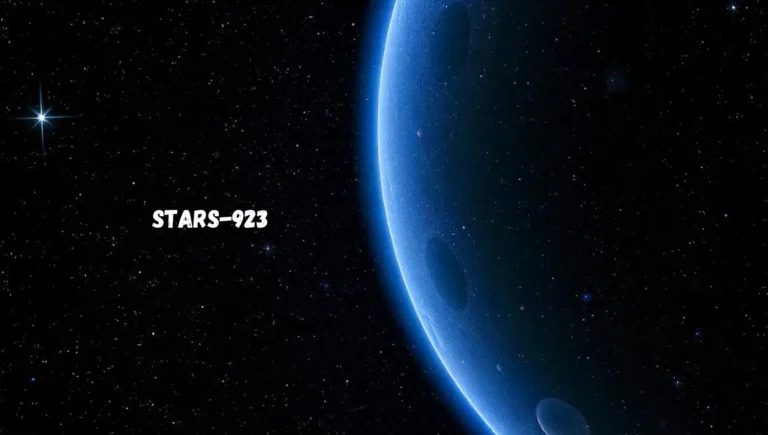The universe is full of mysteries, and one of the terms gaining attention is Stars-923. But what exactly is Stars-923? Is it a celestial phenomenon, a cultural symbol, or a breakthrough in scientific research? This article aims to dive deep into the concept, its relevance, and what it means for astronomy enthusiasts and curious minds alike.
What is Stars-923?
At its core, Stars-923 can be understood in multiple contexts. While it might sound like a code name or catalog entry for a star or group of stars, it could also have symbolic or digital significance. Understanding Stars-923 requires breaking down its components and examining its relevance across different fields.
- Astronomical Context
- Stars-923 could be a reference to a specific star or group of stars cataloged in an astronomy database. Many stars are given catalog numbers as they are discovered or studied. This could be a designation in a star catalog like HIP or HD. If so, Stars-923 represents an astronomical body whose characteristics might be of particular interest to the scientific community.
- Cultural and Symbolic Meaning
- Stars have often been used as symbols of guidance, hope, and inspiration. If Stars-923 falls into this category, it might hold symbolic meaning in popular culture, literature, or art. Whether linked to numerology or other forms of symbolism, Stars-923 could represent a concept that resonates with people on a deeper, more philosophical level.
- Stars-923 in Digital and Scientific Research
- In the digital realm, Stars-923 might refer to a code or identifier used in data-driven projects. It could represent an element in a digital star map, a tag in a celestial database, or part of a larger research project that seeks to analyze celestial bodies and their properties.
The Significance of Stars in Human History
Stars have fascinated humans for millennia. Whether used for navigation or as part of our mythologies, stars represent something larger than life. In this section, we explore the significance of stars in human history and how Stars-923 might fit into this larger narrative.
Stars in Ancient Civilizations
Ancient cultures relied heavily on stars for guidance and storytelling. From the pyramids of Egypt aligned with constellations to the Greek mythology of star gods, celestial bodies have played a vital role in shaping civilizations. Stars-923, while a modern term, could very well be rooted in these historical fascinations with the cosmos.
The Science Behind Stars
In the scientific community, stars are massive celestial bodies that produce light and energy through nuclear fusion. Understanding stars like Stars-923 requires a grasp of astrophysics. They undergo life cycles, from birth in nebulae to their death as white dwarfs, black holes, or supernovae. Stars-923 might be a unique star with rare properties that warrant special attention from astronomers.
Technological Exploration of Stars: How Stars-923 Fits In
Advances in technology have allowed us to explore stars in ways that were unimaginable just a century ago. Space telescopes like the Hubble and, more recently, the James Webb Telescope have provided detailed images of stars light years away. If Stars-923 refers to a specific star, modern technology likely played a role in its discovery or detailed observation.
Telescopic Discoveries
Since the invention of the telescope, our ability to study stars has grown exponentially. Stars-923 might be part of a new wave of discoveries made possible by increasingly sophisticated telescopes and space exploration equipment.
Data Mapping and Stars-923
With advancements in computational astrophysics, astronomers can now map out stars in ways never before possible. Large databases contain millions of stars, each tagged with specific data like luminosity, distance, and spectral type. Stars-923 could be one of these data points, providing crucial insights into star behavior and the structure of our galaxy.
Potential Theories Around Stars-923
Theories abound in the astronomical community regarding star formations, their life cycles, and how certain stars may behave uniquely. Could Stars-923 represent a new theory or hypothesis?
Binary Star Systems
One possibility is that Stars-923 refers to a binary star system, where two stars orbit around each other. Binary stars are common and provide essential clues about the mass and behavior of stars. If Stars-923 is indeed a binary system, it might represent a breakthrough in understanding how such systems form and evolve.
Stars-923 and Black Hole Theories
Another possibility is that Stars-923 is connected to research on black holes. Some stars are so massive that, upon their death, they collapse into black holes. Studying such stars provides critical information on the most mysterious objects in the universe.
Why Stars-923 Matters: Implications for the Future
Whether Stars-923 represents a scientific discovery, a cultural phenomenon, or a symbol, it holds significance. Understanding Stars-923 can lead to greater knowledge of our universe and its workings.
Astronomical Significance
If Stars-923 is a newly discovered star, its properties could be essential for understanding the life cycle of stars, galaxy formation, or even the future of our universe.
Cultural Impact
Culturally, Stars-923 might symbolize new hope or a change in perspective for how we view the cosmos. It could be featured in literature, art, or music, symbolizing humanity’s never-ending quest to explore and understand the universe.
Conclusion: The Infinite Possibilities of Stars-923
Whether you’re an astronomy enthusiast or someone fascinated by the mysteries of the universe, Stars-923 offers a glimpse into the vastness of our galaxy. It could represent a star waiting to be discovered, a cultural icon, or a breakthrough in scientific research. What’s certain is that Stars-923 carries intrigue, inspiring a new generation to look up at the night sky and wonder what lies beyond.


